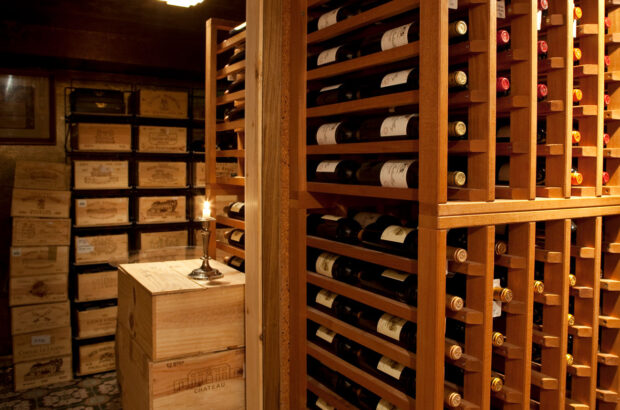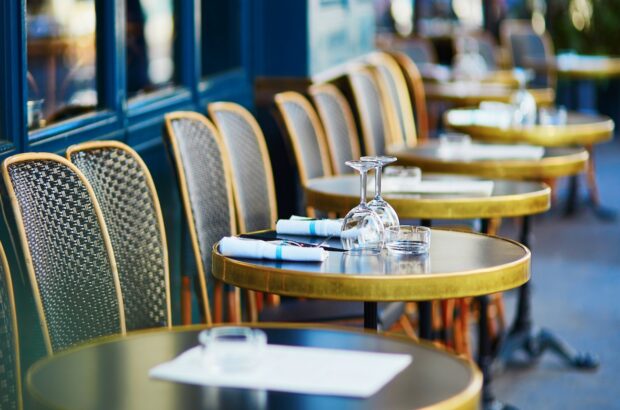Be prepared for an overwhelming sense of awe when you see the lush green leaves covering the rolling hills of Conegliano and Valdobbiadene for the first time, interrupted only by centuries-old stone buildings, brick towers and blue skies. These hills host some of the steepest vineyards in Italy – and some of the best sparkling wines, too, in the form of Prosecco Superiore DOCG.
It’s an area worth exploring over a couple of days in order to admire the manicured hills that have been a UNESCO world heritage site since 2019. And just an hour away lies Venice; a perfect excursion.
The south-facing vineyards which cover the slopes at 100-500m above sea level turn their backs to the forests on the north side of the hills, enjoying all the sun they can get. A moderate climate and a lot of rain, combined with constant winds, allows Glera, the main grape of Prosecco, to thrive. Other local varieties, such as Glera Lunga, Verdiso, Perera and Bianchetta Trevigiana, are also used in small quantities, along with some international grapes including Pinot Noir – which gives its colour to Prosecco rosé, which was approved as a DOC in 2020.
Most of the grapes for Prosecco DOC are grown on the plains, but the Prosecco Superiore DOCG grapes come exclusively from the dense hillside vineyards between Conegliano and Valdobbiadene. The even steeper hills of the Cartizze sub-region (just 108ha) and the ‘rive’ (43 individual localities), require heroic harvesting.
According to Elvira Bortolomiol, the current president of the Consorzio of Conegliano Valdobbiadene Prosecco Superiore DOCG (around 430 winemakers), the growth of Prosecco Superiore demonstrates how consumers are appreciating its quality. ‘We believe that the recognition of the hills of Conegliano Valdobbiadene as a UNESCO World Heritage Site has played an important role in giving visibility to its territory of origin, to this extraordinary beauty.’
The Prosecco road
The uniqueness of this territory can be best enjoyed on the Prosecco road (‘Strada del Prosecco’), created in 1966. It’s a 90km loop, best enjoyed on a vespa or e-bike. There are also hiking routes – such as the 15 km Prosecco loop (‘Anello del Prosecco’), which winds through some of the Valdobbiadene villages – to leisurely explore the area’s winemaking and gastronomic traditions.
Isidoro Rebuli, president of Strada del Prosecco e Vini dei Colli Conegliano Valdobbiadene, has seen the area grow into a well prepared international tourism destination. He believes that the denomination will continue to claim a higher status by learning from its own history, for example by paying attention to refermentation in the bottle, traditionally called Valdobbiadene Col Fondo.
If you are in the area in May, you might see the cyclists of the Giro d’Italia race whizzing through Valdobbiadene. In June, Conegliano Valdobbiadene Experience offers events such as wine treks, concerts and vineyard picnics. If you are visiting in early October, look for vintage cars in the Centomiglia race cruising along the hills and through the historic villages.
My perfect day in Prosecco

Credit: Villa Clementina
Morning
Wake up at Villa Clementina in San Pietro di Feletto – northwest of Conegliano – and go for a jog in the hills before returning for a breakfast surrounded by vineyards. Enjoy a wine tasting at Sorelle Bronca, where sisters Antonella and Ersiliana Bronca make three exceptional organic Prosecco Superiore DOCG Rive in a series called ‘Particelle’ from their historical family plots. They are also behind the Harvey Nichols brand of Prosecco Superiore DOCG, available in the UK.
Afterwards head to Villa Sandi, where you will be accompanied through underground cellars directly into the heart of a Palladian villa and winery. Try the Cartizze Brut – Villa Sandi is one of the first producers of this drier style of Cartizze.
Hop back to the other side of the hill for lunch at Trattoria alla Cima, where you can bite into juicy meat grilled on an open fire or savour a delicate basil risotto.

Credit: Bisol
Afternoon
After lunch, take a tour at Bisol, a winery where you can appreciate the ‘grand crus’ of Prosecco. Bisol has worked hard to take Prosecco Superiore to new markets, and a visit to its historic cellar and a tasting of its crus is nothing short of a revelation. The Bisol1542 Edizione I Gondolieri bottling is the official Prosecco of the Venice Gondolier Association.
After Bisol, head to Bortolomiol winery, one not to miss when talking about Cartizze – or culture. Bortolomiol has restored a small 19th century silk mill and transformed it into a visitor’s centre, where a wine tasting is an education in the variety of Prosecco styles, interwoven with history. Try the Grande Cuvée del Fondatore Motus Vitae, dedicated to Giulio Bortolomiol, the creator of the first Prosecco Brut in 1960.
Then, if you have time, head to Latteria Perenzin in Conegliano for a cheese tasting paired with lesser-known local wines.

The Possamai family. Credit: Il Capitello Ristorante
Evening
Stop back at base to freshen up and taste Villa Clementina’s range of Proseccos, before heading to Il Capitello restaurant for a luxurious dinner in a rustic setting, where the charismatic Possamai family welcomes you warmly.
Excursions to Venice
When you arrive in Venice (which can be done as a day trip) you will feel like you have stepped into a 16th century painting. Venice is an endless challenge for its own residents (transporting goods along canals, the swarm of tourists in the summer, and the occasional acqua alta). For the rest of us, it’s a gift of godly proportions.
A cicchetti and Prosecco crawl is a must while navigating the maze of calli and canals in Venice. Make sure to stop at Bar All’Arco near the Rialto bridge, the quintessential Venetian bacaro (wine bar) where you can try small bites along with some natural Prosecco.
Enjoy a glass in one of the campi (squares), or standing at a bar counter at the popular Cantine del Vino già Schiavi. Take a sweet break at pasticceria Rosa Salva sitting in Campo Santi Giovanni e Paolo – but watch out for the crafty seagulls hoping to steal your treat.
For an authentic seafood experience, dine at one of the established fish restaurants of the city, such as Al Covo or Antiche Carampane. Be sure to book your table in advance.

Venissa chef’s table. Credit: Valeria Necchio
Venissa – An alternative Venice
To avoid the crowds and to see Venice like never before, consider taking a boat from Altino (a 10-minute drive from Marco Polo Airport) to Venissa wine resort on Mazzorbo island.
Gianluca Bisol (of Bisol Prosecco fame) revived a 1ha piece of land on the island of Mazzorbo to cultivate Dorona, long-thought to be extinct, and produces from this variety a golden-hued wine in handmade Venetian glass bottles, labelled literally with a gold leaf. Venissa has five rooms and hosts an osteria and a Michelin star restaurant. From Mazzorbo you can walk to Burano island, just over a wooden bridge, famous for its lace artisans and colourful houses.
Your Prosecco and Venice address book
Where to stay
Formerly known as Tenuta Contarini, a 19th-century farmhouse that has been transformed into a charming relais. Feel at home and let yourself be spoiled by the impeccable hospitality.
A farmhouse with comfortable rooms and great views. Enjoy the property’s own wine and produce.
Treat yourself to this Relais & Châteaux inn, an 18th century mansion between Valdobbiadene and Conegliano with a restaurant and separate bistrot.
Where to eat
With refined and homemade seasonal primi, and open-fire grilled meat, Isidoro Rebuli consistently offers good food with lovely views. Try Cima’s own excellent Prosecco Superiore DOCG, as well as other regional wines from the wine list.
Offering creative antipasti such as picanha with artichokes, and seasonal primi such as asparagus risotto, Il Capitello’s speciality is grilled meat. Impeccable service from a family of restaurateurs.
Young Italian chefs Chiara Pavan and Francesco Brutto focus on sustainability and turn the produce of their vegetable garden, along with wild herbs and seafood of the lagoon, into memorable dishes such as vine leaf chips and artemisia ravioli.
Al Covo uses quality ingredients from the Venetian islands and the Adriatic sea, like the pink oysters from the Po Delta, as well as from other regions, such as Chianina beef from Tuscany. Their wine menu is well curated and offers a chance to try excellent Prosecco Sui Lieviti (on the lees).
This historical restaurant offers skillfully prepared traditional seafood specialities. Try classics like sardines in saor, or cuttlefish in ink. In the spring and autumn, don’t miss the fried moeche (soft-shell crab). The wine list includes a good selection of organic and natural wines.
What to do
Say cheese
Visit Latteria Perenzin for award-winning cheeses such as inbriago, aged in Glera grape pomace. Contact the lovely owner, Erika, for a private visit of the ageing cellar or to book an aperitivo with cheese tasting.
Give Grappa a chance
For a change of grape scene, visit Distilleria Bonaventura Maschio to see copper distillers and taste the Prime Uve Grappa distilled from fresh grapes. If you have more time, head west to Bassano del Grappa and visit Capovilla – be amazed by more than 60 types of Grappa made from various (some wild) fruits and herbs.
Appreciate art through food
When in Venice, visit the Gallerie dell’Accademia to admire The Feast in the House of Levi by Paolo Veronese, painted in 1573 and covering an entire wall.
Prosecco: How to get there
The nearest airport is Venice Marco Polo Airport. Conegliano is just a 30-minute drive north from the airport (about 50km). The smaller Treviso airport is closer to the wine region (about 35km) but less serviced.
Fast trains bring you to Venezia Santa Lucia train station from Milan (2.5 hours) or Rome (four hours), where you can exit straight onto a canal – as nowhere else in the world.







